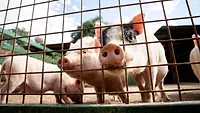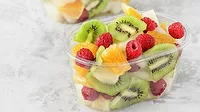Revolutionizing Food Analysis: The Synergy of Artificial Instruments and Machine Learning Methods
.webp?t=1699369261)
Image credit: Kontekbrothers/iStock/Getty Images Plus via Getty Images
The fusion of artificial instruments and machine learning within the realm of food science and technology has heralded a transformative era characterized by precision and depth in food analysis.1 The advent of artificial technologies like electronic noses, electronic eyes, and electronic tongues has fundamentally reshaped our approach to evaluating food samples, as underscored by their ability to capture intricate sensory attributes.2 These cutting-edge instruments, synergistically harnessed with machine learning capabilities, empower us to delve into the nuanced characteristics of foods, spanning the spectrum of aroma, color, and taste profiles.
The development of electronic noses has advanced beyond conventional sensory assessments and made it possible to identify the volatile substances that create odors. These tools analyze complicated odor patterns when combined with machine learning, improving our understanding of the sensory experiences associated with food. The machine learning-enhanced electronic eye quickly evaluates visual cues including color and texture, enabling fair evaluations of food quality. The electronic tongue, which mimics human taste perception, differentiates taste qualities more precisely and so expands the utility of the device for classification and predictions.
A fundamental component of contemporary food analysis, this combination of artificial tools and machine learning amplifies insights across various sensory dimensions. Its effects range from improving the accuracy of food assessments to encouraging innovations that reimagine food quality management and hospitality.
Essence of the Artificial Electronic Nose
Inspired by the human olfactory system, the artificial electronic nose presents a paradigm shift in sensory analysis. Comprising an array of gas sensors, this technology can detect and analyze volatile compounds responsible for food aroma.3 These gas sensors generate data points that capture diverse odor patterns, laying the foundation for further analysis.
Illuminating Insights with the Electronic Eye
The electronic eye, or hyperspectral imaging, transcends human vision by providing comprehensive insights into food color, texture, and surface properties. By capturing a multitude of spectral bands, this technology enables the objective examination of a food item's internal composition and detects deviations from the norm.4
Looking for quick answers on food safety topics?
Try Ask FSM, our new smart AI search tool.
Ask FSM →
Savoring Complexity with the Electronic Tongue
The electronic tongue, mirroring the human sense of taste, employs an array of sensors to analyze taste profiles in food samples. These sensors respond to various chemical compounds, allowing the device to capture the intricate taste dimensions of bitterness, sweetness, sourness, and umami.5
Synergy Between Artificial Instruments and Machine Learning
The convergence of artificial instruments with machine learning techniques engenders a powerful synergy, enabling the realization of their utmost capabilities. These advanced tools yield complex and substantial datasets, which might pose formidable processing hurdles when approached by conventional analytical means. Machine learning's innate proficiency in discerning intricate patterns, correlations, and anomalies endows it with an indispensable role in transmuting raw data into actionable insights of high value. This collaborative amalgamation harnesses an array of sophisticated pattern recognition methodologies, encompassing both supervised techniques such as Support Vector Machines (SVM), Artificial Neural Networks (ANN), Naive Bayes, logistic regression, Random Forest, and K-Nearest Neighbors (KNN), as well as unsupervised methods including Principal Component Analysis (PCA), Discriminant Analysis (DA), and Cluster Analysis.3,6
Challenges and Future Prospects
The fusion of artificial tools and machine learning has created a favorable alliance that opens up a wide range of potential. However, there are enduring issues with this combination that demand careful consideration. Maintaining data quality, providing algorithmic resilience, and maintaining interpretability are the three main difficulties.
Of equal consequence is the difficult task of guaranteeing firm accuracy and consistency across a complex variety of sample types, a challenge that persists in its complexity. Although progress has been made in addressing these differences, a total resolution is still a goal that is difficult to achieve, reflecting the views of academics working in the area. Research efforts will focus on the continuous improvement of algorithmic accuracy and adaptability. Notably, the future's growth is not restricted solely to technical advancements. It is crucial that everyone has access to these tools in the food industry.
The convergence of artificial instruments such as electronic noses, electronic tongues, and electronic eyes with machine learning has propelled food analysis to new heights. These technologies, by capturing and deciphering intricate aroma, color, and taste attributes, enable precise and swift assessments of food quality and authenticity. The symbiotic relationship between artificial instruments and machine learning underscores their potential to reshape the food industry, ensuring that the food we relish is not only delectable but also safe and of the highest quality. As these fields evolve, the alluring future of food analysis awaits—a fusion of scientific exploration and technological innovation that resonates with the scents, flavors, and textures it seeks to elucidate.
- Liu, Z., S. Wang, Y. Zhang, Y. Feng, J. Liu, and H. Zhu. "Artificial Intelligence in Food Safety: A Decade Review and Bibliometric Analysis." Foods 12 (2023): 1242. https://doi.org/10.3390/foods12061242.
- Shi, Y., X. Wang, S. Borhan, et al. "A Review on Meat Quality Evaluation Methods Based on Non-Destructive Computer Vision and Artificial Intelligence Technologies." Food Science of Animal Resources 41.4 (2021): 563. https://www.ncbi.nlm.nih.gov/pmc/articles/PMC8277176/.
- Kaushal, S., P. Nayi, D. Rahadian, and H.-H. Chen. "Applications of Electronic Nose Coupled with Statistical and Intelligent Pattern Recognition Techniques for Monitoring Tea Quality: A Review." Agriculture 12 (2022): 1359. https://doi.org/10.3390/agriculture12091359.
- Gómez, A., D. Bueno, and J.M. Gutiérrez. "Electronic Eye for Identification of Tequila Samples." Proceedings 60 (2020): 44. https://doi.org/10.3390/IECB2020-07073.
- Kang, B.-S., J.-E. Lee, and H.-J. Park. "Electronic tongue-based discrimination of Korean rice wines (makgeolli) including prediction of sensory evaluation and instrumental measurements." Food Chemistry 151 (May 2014): 317–323. https://www.sciencedirect.com/science/article/abs/pii/S0308814613017214.
- Chen, J., L. Wang, and S. Duan. "A mixed-kernel, variable-dimension memristive CNN for electronic nose recognition." Neurocomputing 461 (2021): 129–136. https://www.sciencedirect.com/science/article/abs/pii/S0925231221010432?via%3Dihub.








